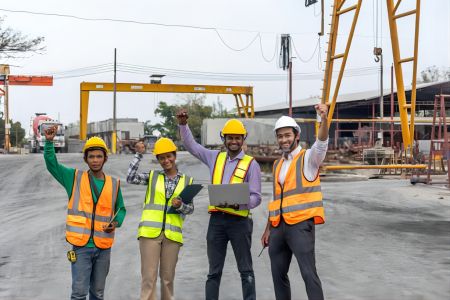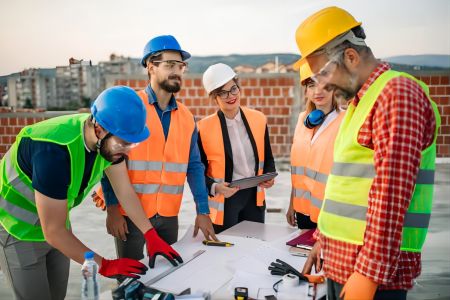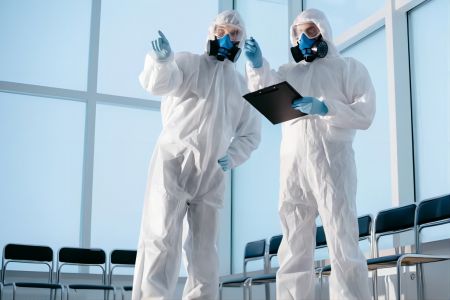2023/6/16

Construction Worker Vests: A Guide to Safety and Visibility
Construction worker vests, also known as hi-vis vests, reflective vests, or safety vests, are essential pieces of personal protective equipment (PPE) designed to enhance visibility and protect workers from hazards on construction sites and other high-risk environments. These vests play a crucial role in reducing "struck-by" incidents, one of the leading causes of workplace injuries and fatalities.
History
The concept of high-visibility clothing emerged in the early 1900s, with cyclists using reflective sashes for nighttime visibility. In the 1930s, railway workers in the United States adopted high-viz gear. Bob Switzer, who experienced a workplace injury, invented a fluorescent paint called "Day-Glo" with his brother in the same decade. High-visibility clothing gained popularity in the 1970s after OSHA made it mandatory for specific occupations like highway construction.
Importance
Enhanced Visibility: Vests make workers more visible to equipment operators, drivers, and other personnel, especially in low-light conditions or inclement weather.
Accident Prevention: Increased visibility reduces the risk of accidents and injuries caused by workers not being seen.
Job Site Safety: Wearing appropriate safety vests promotes consistent safety practices and demonstrates an employer's commitment to worker well-being.
Standards and Classifications
In the United States, the ANSI/ISEA 107 standard governs high-visibility safety apparel. This standard, updated every five years, establishes requirements for design, performance, and use of HVSA, including:
Minimum areas for background and retroreflective material
Garment design and configuration
Performance testing for durability and reflective capabilities
Labeling requirements
Types of Work Environments (ANSI/ISEA 107-2020)
Type O (Off-Road): For areas with restricted public access, such as warehouses and enclosed construction sites.
Type R (Roadway Work): For workers exposed to traffic on public roads or temporary traffic control zones.
Type P (Public Safety): For first responders facing vehicle hazards and other risks.
Safety Vest Classes
Safety vests are classified based on visibility level and intended use:
Class 1: Provides minimum visibility for low-risk environments where traffic speeds do not exceed 25 mph, and workers can give full attention to approaching traffic. Suitable for warehouse workers, parking attendants, and those on sidewalks.
Class 2: Offers increased visibility for moderate-risk environments with traffic speeds between 25 and 50 mph, complex work backgrounds, or inclement weather. Appropriate for construction zones and roadside maintenance.
Class 3: Provides the highest level of visibility for high-risk environments with traffic speeds exceeding 50 mph or poor visibility conditions. Essential for emergency responders, highway construction workers, and utility workers.
Colors and Their Meanings
While orange is the most common color for construction safety vests, different colors can serve different purposes:
Orange: Typically used for construction workers, utility workers, and highway maintenance crews.
Yellow: Often worn by school crossing guards and traffic control officers.
Green: Frequently used by surveyors and landscapers.
Blue: Commonly worn by police officers and security guards.
Red: Typically worn by firefighters and other emergency responders.
White: Meant for general laborers.
Other Considerations
Flame Resistance (FR): In environments with fire, electrical arc, or heat hazards, vests must meet FR standards like ASTM F1506-19 or NFPA 1977 (2016).
Material: Vests are made from lightweight mesh, solid polyester, or flame-resistant materials.
Design: Features include zip-up closures, multiple pockets for tool storage, and LED lighting for enhanced visibility in dark environments.
Ensuring Compliance
To ensure safety vest compliance with industry standards:
Identify the Applicable Standard: Confirm the vests meet ANSI/ISEA 107-2020 standards.
Verify Material Adequacy: Check for the required amounts of background and retroreflective materials.
Inspect Color and Brightness: Ensure the vest's color is a bright, fluorescent yellow-green, orange-red, or red.
Check Label Markings: Confirm clear markings indicate performance class, type, and flame resistance (if applicable).
By understanding the types, standards, and importance of construction worker vests, employers and employees can significantly improve on-site safety and reduce the risk of accidents.




 WhatsApp
WhatsApp
Send us your message
You can send an email asking for the price and detailed information of this product. We will reply you as soon as we receive your email